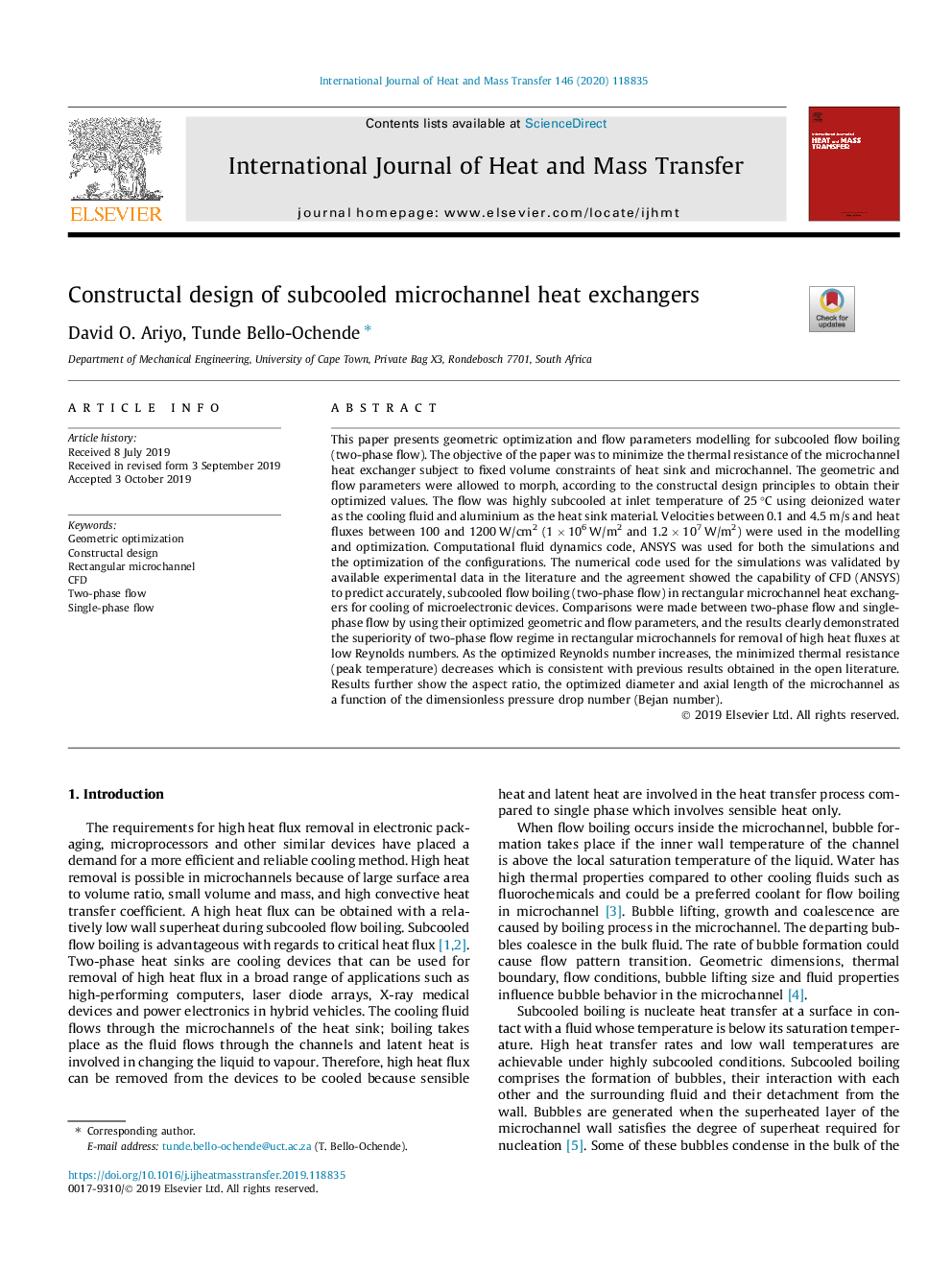| Article ID | Journal | Published Year | Pages | File Type |
|---|---|---|---|---|
| 13443877 | International Journal of Heat and Mass Transfer | 2020 | 11 Pages |
Abstract
This paper presents geometric optimization and flow parameters modelling for subcooled flow boiling (two-phase flow). The objective of the paper was to minimize the thermal resistance of the microchannel heat exchanger subject to fixed volume constraints of heat sink and microchannel. The geometric and flow parameters were allowed to morph, according to the constructal design principles to obtain their optimized values. The flow was highly subcooled at inlet temperature of 25â¯Â°C using deionized water as the cooling fluid and aluminium as the heat sink material. Velocities between 0.1 and 4.5â¯m/s and heat fluxes between 100 and 1200â¯W/cm2 (1â¯Ãâ¯106â¯W/m2 and 1.2â¯Ãâ¯107â¯W/m2) were used in the modelling and optimization. Computational fluid dynamics code, ANSYS was used for both the simulations and the optimization of the configurations. The numerical code used for the simulations was validated by available experimental data in the literature and the agreement showed the capability of CFD (ANSYS) to predict accurately, subcooled flow boiling (two-phase flow) in rectangular microchannel heat exchangers for cooling of microelectronic devices. Comparisons were made between two-phase flow and single-phase flow by using their optimized geometric and flow parameters, and the results clearly demonstrated the superiority of two-phase flow regime in rectangular microchannels for removal of high heat fluxes at low Reynolds numbers. As the optimized Reynolds number increases, the minimized thermal resistance (peak temperature) decreases which is consistent with previous results obtained in the open literature. Results further show the aspect ratio, the optimized diameter and axial length of the microchannel as a function of the dimensionless pressure drop number (Bejan number).
Keywords
Related Topics
Physical Sciences and Engineering
Chemical Engineering
Fluid Flow and Transfer Processes
Authors
David O. Ariyo, Tunde Bello-Ochende,
